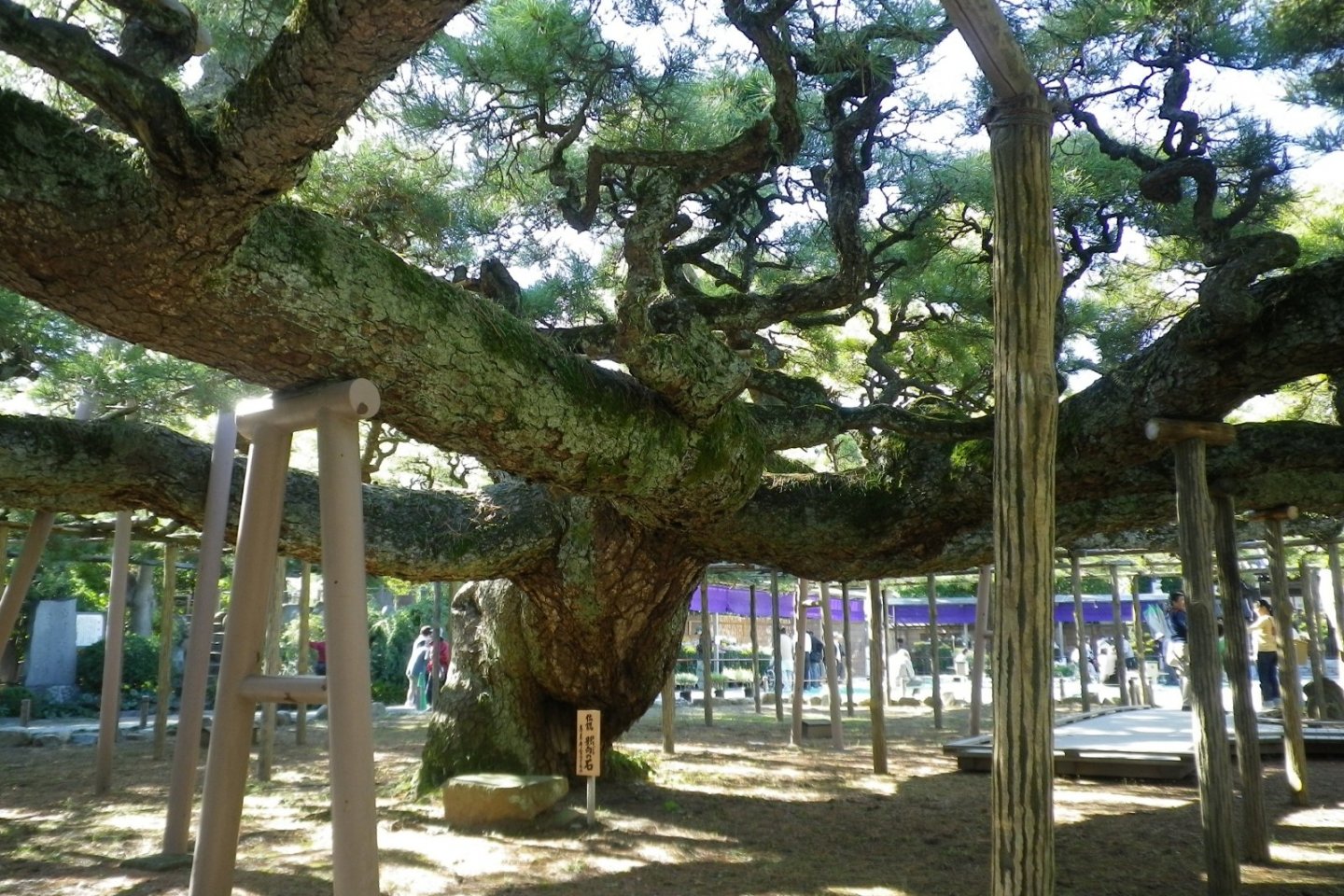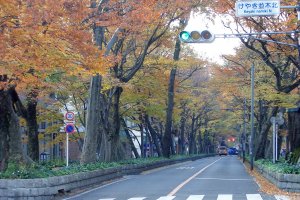Overview
Tokyo features on the nation's Natural Monument listing with twelve representatives. Ranging throughout Tokyo's southernmost location, its central wards and the western rural cities and towns, the capital's Natural Monuments are heavily tree-centred but also include ancient oceanfront limestone formations and volcanic islands. Here is a simple guide on where to find national Natural Monuments in Tokyo.
Ogasawara Islands
Minami-jima Island
The millions of years-old weathered limestone karst formations of the uninhabited Minami-ijima Island just off Chichi-jima Island were recognised nationally as a Natural Monument in 2008.
Location: Minami-jima Island, Tokyo (nearest access: Futami Port, Chichij-ima Island)
Minami Io-to Island
Declared a Natural Monument in 1972 and lying as far away from Tokyo as one can be but still be in the capital, Minami Io-to Island is one of the very few islands believed to have never known human habitation.
Location: Minami Io-to Island, Tokyo (nearest access: Futami Port, Chichi-jima Island)
Oshima Island
Oshima Plant Community
The Oshima Kaihin Shokubutsu Gunraku was awarded national Natural Monument status in 1952. Visible from a seaside walking trail, this plant community features scores of unique island flora.
Location: Senzu, Oshima Town, Tokyo (nearest access: Motamachi Port, Oshima Island)
Castanopsis Forest
A small but natural forest growing on the slopes of Mt. Mihara, the Castanopsis Forest is known as shiinoki gunso in Japanese and was given Natural Monument status in 1951.
Location: Senzu, Oshima Town, Tokyo (nearest access: Motomachi Port, Oshima Island)
Nerima Ward
The Zelkova Trees of Hakusan Shrine
Designated as Natural Monuments in 1940 and in 1996, Hakusan Shrine's two large zelkova trees are thought to be remnants of seedlings planted in the 11th century. Both trees stand around twenty metres in height with a circumference of around ten metres.
Location: 4 Nerima, Nerima-ku, Tokyo 〒176-0001 (nearest station: Toshimaen Station, Toei Oedo Line)
The Plant Colony of Sanpoji Pond
Awarded Natural Monument status in 1935, Sanpoji Pond and its plants have been a well known suburban site since Edo times. The pond itself is also listed as a Tokyo entry in the 100 Soundscapes of Japan listing.
Location: 1-26-1 Shakujiidai, Nerima-ku, Tokyo 〒177-0045 (nearest station: Shakuji-koen Station, Seibu-Ikebukuro Line)
Edogawa Ward
The Yogo Pine of Zenyo-ji Temple
The Yogo Pine tree of Zenyo-ji Temple, elevated to national Natural Monument status in 2011, is thought to be over 600 years old with branches extending up to 30 metres. The tree is nicknamed yokozuna after sumo wrestling's highest rank.
Location: 2-24-2 Higashi Koiwa, Edogawa-ku, Tokyo 〒133-0052 (nearest station: Edogawa Station, Keisei Line)
Ome City
The Zelkova Tree of Mt. Mitake
Found an altitude of almost 900 metres on Mt. Mitake, this 600-year old zelkova tree was awarded Natural Monument status in 1928. Nicknamed the Zelkova from the Age of the Gods, the tree stands 30 metres tall with a circumference of almost 9 metres.
Location: 145 Mitakesan, Ome-shi, Tokyo 〒198-0175 (nearest station: Mitake Station, JR Ome Line)
Fuchu City
The Zelkova Tree Avenue of Babadaimon
The Babadaimon Zelkova Trees were given Natural Monument status in 1924, featuring zelkova trees lined up for over 600 metres north from Okunitama Shrine. The avenue that the trees stand in crosses over into several districts of the city.
Location: 1 Miyanishi-cho, Fuchu-shi, Tokyo 〒183-0022 (nearest station: Fuchu Station, Keio Line)
Hinode
The Weeping Hornbeam of Sajikami Shrine
Believed to have been a gift to Sajikami Shrine, this weeping hornbeam was awarded Natural Monument status 1942. Its 5 metres of height and knotty branches give off a most curious impression.
Location: 2129 Oguna, Hinode-machi, Nishi-tama District, Tokyo 〒190-0181 (nearest station: Fussa Station, JR Ome Line)
Minato Ward
The Gingko Tree of Zenpuku-ji Temple
One of the largest in Tokyo, Zenpuku-ji Temple's gingko tree stands at almost 20 metres with a trunk circumference of a huge 10 metres. Awarded Natural Monument status in 1926, legend has it that the tree grew from the spot upon which a monk placed his cane.
Location: 1-6-21 Motoazabu, Minato-ku, Tokyo 〒106-0046 (nearest station: Azabu-juban Station, Toei Oedo Line)
Chiyoda Ward
The Luminous Moss of Edo Castle
Kitanomaru Park features luminous moss growing on a stone wall by the moat of old Edo Castle. Awarded Natural Monument status in 1972, the moss would not normally be found there and is thought to be a remnant from the castle's original construction.
Location: 1-1 Kitanomaru-koen, Chiyoda-ku, Tokyo 〒102-0091 (nearest station: Kudanshita Station, Hanzomon Line)




























